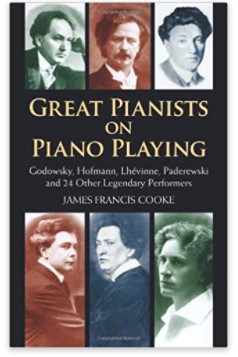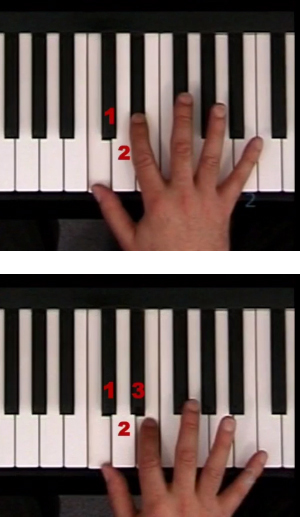The Pathway to Music
by Mark Almond

Historically speaking, the most accurate and practical explanation of the nature of music stems from the year 1722. The fact that the best explanation of music has been treated as an insignificant “attachment” to the common traditions of music education has been a disaster on a scale which is impossible to measure. Since all music comes from simple relationships that are easy to understand, it should be obvious that this must be clearly communicated to everyone. As early as the 1890’s through to this very day, traditions in music education have been hiding important insights under a mountain of complexity. The number of teachers who are able to break through these obstacles are too few in number.
 Success in music has a life changing impact upon every individual who makes it through the initial barriers. New studies continue to show that the quantity of information that can be carried by impulses in the brain speeds up tremendously as a result of music training. The pathways carrying the electrical impulses greatly expand in size allowing the amount of information to increase by up to three thousand times! Easy access to the benefits of experiencing music on a deep level has implications that are evidently much more important than we can even imagine.
Success in music has a life changing impact upon every individual who makes it through the initial barriers. New studies continue to show that the quantity of information that can be carried by impulses in the brain speeds up tremendously as a result of music training. The pathways carrying the electrical impulses greatly expand in size allowing the amount of information to increase by up to three thousand times! Easy access to the benefits of experiencing music on a deep level has implications that are evidently much more important than we can even imagine.
Music offers a totally unique and stimulating kind of reward system to the learning process. Concentration and sustained focus are rewarded with tonal and rhythmic experiences that can rise to the level of aesthetic beauty. This creates the capacity for problem-solving that reaches far beyond just music. Those who learn the value of applying sustained concentration will enjoy the benefits throughout their entire lifetime. In addition, studies are being done attempting to quantify the drastic impact this has on IQ. The neurological pathways expanded by music study are the same pathways used in mastering language, math, science, and many other skills. Although this applies to all ages, music is also the very best bridge, for children three years old and younger, to move on to more abstract subjects, once they have had meaningful musical experiences. The impact of successful music study should be of intense concern to every family and every nation on the face of the earth.
As the examples below will demonstrate, the traditions that have dominated in music education are a close parallel to having very few mathematicians or scientists bothering to investigate the practical implications of the law of gravity. Most of the progress in modern science and physics is based on an accurate understanding of gravitation. Ignoring the many implications of the law of gravity is unthinkable in the realm of science. The same is true in regard to the simple laws of harmony in music. Continuing to ignore the best historical analysis of music, and failing to demonstrate its implications, is unimaginable in its consequences, but this mentality and crystallized tradition still persists to this day.
 Some may think it is overstating the case to claim that embedded traditions in music education perpetuate an incomplete understanding of the laws of harmony. It may sound like an exaggeration to say that this has caused immeasurable human suffering, but there are millions of us with clear memories of the ongoing trauma. I can’t number the times that I have heard people say that music theory classes in college were not only excruciating, but the hardest classes of all, even compared to physics. Think also of the millions of people, over the centuries, who had a deep love of music, but who also failed completely in their attempt to learn to play the piano because of insurmountable frustration. This will continue to be the case as long as the simple rules of harmony, clearly articulated in 1722, are buried under an avalanche of unnecessary complexity.
Some may think it is overstating the case to claim that embedded traditions in music education perpetuate an incomplete understanding of the laws of harmony. It may sound like an exaggeration to say that this has caused immeasurable human suffering, but there are millions of us with clear memories of the ongoing trauma. I can’t number the times that I have heard people say that music theory classes in college were not only excruciating, but the hardest classes of all, even compared to physics. Think also of the millions of people, over the centuries, who had a deep love of music, but who also failed completely in their attempt to learn to play the piano because of insurmountable frustration. This will continue to be the case as long as the simple rules of harmony, clearly articulated in 1722, are buried under an avalanche of unnecessary complexity.
If you think that cultural and educational traditions are not powerful and stubborn foes, you have never studied the history of medical practices. Even in very recent history, you might be very surprised at how quantum physics is taught in the physics textbooks. The initial original breakthroughs are represented by incomprehensible mathematical formulas that only a handful of scientists in the entire world can understand, even though Richard Feynman streamlined the math in a much more direct and practical manner. His math, his insight, and his instruction are superior to the original way these discoveries have been communicated to students, yet the traditional original approach mindlessly prevails in the textbooks. Feynman also unified classical mechanics and quantum mechanics into a single system in a way that would save students countless hours of unnecessary mind numbing study. Welcome also to the world of music theory text books, where traditions are piled on top of traditions and the basic assumptions are never questioned or corrected. At a bare minimum, all music teachers should provide a thorough breakdown and analysis of harmony in a way that makes sense to every student. This has been done by innovative composition teachers all throughout history when they have added additional explanations and clarifications that cut through the complexity and confusion. There are also piano teachers today who accomplish this when they break things down carefully, patiently, and analytically. As we shall see in the following paragraphs, the explanation of the “art of harmony” that broke onto the scene in 1722 is the best strategic basis for analyzing music in a practical way.
Piano teachers are now admitting that only 2% of their students are making it to the end of the second year of lessons. Of the 2% who continue with lessons, how many of them play mechanically and without feeling? My opinion on that number may be quite offensive, but it is reasonably close to the reality. To be kind, I’ll say that less than 10% of those who have continued with lessons, for two or more years, can play with freedom and can project emotion that reaches the listener. Those who do manage to play with feeling most often do so because they also play “by ear” outside of the lessons, which is usually done against the will of the teacher. The rhythmic feel they develop while playing by ear, often spills over into their interpretation of written notes. This is great when it happens, but it is a real tragedy that this happens so rarely.

Jean Philippe Rameau – Father of Modern Harmony
We have an important and drastic alternative relating to the number of people who will be able to experience success in music education. A relatively obscure opera composer in France was the first person to explicitly crack the code as to how music is structured at its heart. This core analysis of the basic structure of music gives us an alternative that ultimately determines the percentages when it comes to how many people will succeed in reaching their goals in music. A deeper understanding of music does not in any way undermine or replace all of the valuable things taught in music education. The right kind of analysis simply has the effect of throwing a flood of light on to the whole process. Perhaps the most important element in what I am about to say, is that this claim is almost instantly verifiable to anyone who looks into it. In a matter of a few minutes, literally, we can understand the underlying building blocks to everything that sounds like music. Philippe Rameau, the opera composer in France, stated point blank, in the year 1722, that all music is based on “thirds.”
You see, already we have a problem, but in this case the problem of this particular technical description is very easy to fix. If you are like most people, you will be upset when you find out how simple “thirds” are. If you have had significant and painful failures in your musical past, you will be even more upset. Rameau is correct, all music is in fact based on “thirds” to a degree that is shocking. No one, including music educators and piano teachers, can dispute Rameau’s analysis once it is demonstrated. Prepare yourself, the practical implications of this are nothing short of astounding. Not only will you know why music sounds like music, you will be able to instantly produce music at the piano that is not only impressive and satisfying, but it will also sound like it is very difficult to play.
Stated bluntly, the traditional way of understanding music through “scale” is too abstract and too general. Scales do have real value in terms of helping us understand that there are “seven primary tone” that tend to occur more often than the other tones during a piece of music. If you play a scale, however, it can not possibly sound like music since it is a summary of the whole song. On top of this, composers and song writers go outside of the scale continually, making the scale analysis a very rough estimate of what actually happens in music.
Contrast this with the simple three note chord. Even playing a single chord to an even pulse produces a musical sound. Playing from chord to chord is tracking the mood changes in music much like “sentence to sentence” in poetry or prose. Understanding the underlying structure to each individual chord, and also how a song moves from one chord to the next chord, is the most direct and practical analysis of music possible. Chords are shockingly simple in design. The exact underlying structure to all of the basic chords is laid out visually in the Piano for Life DVD series (also in the web site lessons) but these structures are also described verbally at the end of this article. It goes without saying that the visual demonstration is much easier to follow. If you can count to three, you can understand music for the rest of your life. Thank you, Philippe Rameau!

Franz Liszt
Do not think for a moment, just because he was ignored by a large segment of the academic establishment, that Philippe Rameau did not have tremendous influence in the music world. He has even been called the father of modern harmony. The chord symbols used by professional musicians in pop, jazz, blues, rock, and other styles of music, are a direct reflection of his insights, where each chord is named individually apart from any reference to the scale. Two of the composers who proved capable of producing an amazing quantity of original music were Bach and Liszt. Bach was a contemporary of Rameau and Bach’s music demonstrates a profound understanding of harmony far beyond simply a “knowledge” of harmony. Franz Liszt, like Rameau, taught his students explicitly that all complex structures in music have “simple parts.” Liszt, by the way, produced the longest list of world class pianists of any piano teacher who ever lived.
It is no coincidence that the greatest child prodigy of all time, Josef Hofmann, was taught harmony at a young age by his father who was a professor of harmony and composition in Warsaw Poland. Russia and Poland, largely because of the brothers Nicolas and Anton Rubinstein, kept the traditions of Liszt and Rameau alive to a much greater degree than music education in Germany, France, England, and the United States. Josef Hofmann was not only the greatest child prodigy, but went on to become the greatest pianist of the 20th century. This opinion was shared by Rachmaninoff, Horowitz, Godowsky, and dozens of other top musicians in the world.
Listen to this incredible direct quote of yet another product of the Liszt school. Liszt himself said that the piano playing of Alfred Reisenauer, compared to all of Liszt’s famous students, was most like his own. This is quite a compliment since most of the world, myself included, still believes that Liszt was by far the greatest pianist of all time. To whom does Reisenauer give the credit for his superhuman powers at the keyboard?
“I can never thank my mother enough for the splendid start she gave me in my early musical life. She was a wonderful woman and a veritable genius as a teacher. There is one thing in particular for which I am everlastingly grateful to her. Before I was taught anything of notes or the piano keyboard, she took me aside one day and explained in the simple and beautiful tongue, which only a mother employs in talking to her child, the wonderful natural relationships of tones used in making music. I have since come to consider this the most important and yet the most neglected step in the education of a child.”
 Whether Rameau influenced Reisenauer’s mother directly or indirectly, his type of analysis is the only reason this kind of thing could possibly be accomplished in one day. This quote above is in the very influential book “Great Pianists On Piano Playing” where the author, James Cooke, interviewed all, or nearly all, of the top pianists in the world in the early 1900s. Many of the famous pianists throughout the interviews warned that modern trends in music education were in effect producing what they called “machine players.” Some of them explicitly warned, as in the Reisenauer quote, that the subject of harmony was not being given the place that is absolutely necessary in balanced music education.
Whether Rameau influenced Reisenauer’s mother directly or indirectly, his type of analysis is the only reason this kind of thing could possibly be accomplished in one day. This quote above is in the very influential book “Great Pianists On Piano Playing” where the author, James Cooke, interviewed all, or nearly all, of the top pianists in the world in the early 1900s. Many of the famous pianists throughout the interviews warned that modern trends in music education were in effect producing what they called “machine players.” Some of them explicitly warned, as in the Reisenauer quote, that the subject of harmony was not being given the place that is absolutely necessary in balanced music education.
Because of the influence of the James Cooke interviews, and the many great biographies these interviews led me to, I have had some unusual successes in my teaching career. First of all, I have been inspired by the top pianists throughout history to “flesh out” the rules of harmony into practical steps. Chords can easily be turned into musical exercises that illuminate the simple natural relationships that exist in music. One of the students that was brought to me at the age of four recently won first place in an international piano competition. Charlie Albright could play over 100 songs at the age of four which he proved many times on regional and national television. All of this was done “by ear” without any ability to read notes whatsoever. I told his parents I could teach him to read music in six months, even though most teachers are unable to teach note reading in this situation. When students play by ear on this level, there is only one option. The teacher must do drills with the student that clarify the entire layout of the musical staff. Students who can play anything they want to by ear will not do this on their own. They also need, of course, drills to demonstrate the underpinnings of the chords they are already using. When they have this double foundation they are unstoppable. Charlie was then taken to a classical teacher who helped him become a world class pianist who among other things now accompanies the famous Cellist Yo Yo Ma. I had a very similar experience with another four year old, Meera Shanti, who also became an amazing concert pianist who plays with power, spirit, and there is no other adequate word, fire.
The fact that music breaks down to simple elements is not great news just for the super-achievers, it is great news for every single person who wants to enjoy the ability to play musically with genuine emotion that comes straight from the heart. We can all look forward to the day when all music teachers take advantage of the fact that there is a simple design to music. This short article is by no means a complete history of the trends in music education. The statements above should not be interpreted as criticism of what is being taught in music education. It is a criticism of what is not being taught. I personally teach all of the traditional material that all other piano teachers teach including both scales and traditional note reading. There are clarifications in these two areas that are often overlooked by teachers, but the point overall is to accept insights from the best traditions and best sources, regardless of the time period these insights first appeared in history. Let’s listen carefully to the greatest pianists and the greatest musicians the world has ever known.
The choice in terms of the basis for music education:
Complex scales patterns that are non-musical in nature . . . Vs. Simply structured three note chords that instantly produce music as soon as they are played with rhythm . . .
 How shall we introduce children and brand new beginners to music? Shall we start with the complex and non-musical or the simple patterns that create music? Shall we start with an analysis that is abstract and general or one that is direct and practical? Traditional music education makes us plow through complex scale patterns in order to get to the simple chords. In the classical system, the chords are named numerically in terms of their relationship to the many different scales, giving each individual chord twelve different names! On top of this, some of the various positions the chords can be played are also given names. This has the effect of hiding the simple behind the complex.
How shall we introduce children and brand new beginners to music? Shall we start with the complex and non-musical or the simple patterns that create music? Shall we start with an analysis that is abstract and general or one that is direct and practical? Traditional music education makes us plow through complex scale patterns in order to get to the simple chords. In the classical system, the chords are named numerically in terms of their relationship to the many different scales, giving each individual chord twelve different names! On top of this, some of the various positions the chords can be played are also given names. This has the effect of hiding the simple behind the complex.
Another thing that makes this decision even easier, in terms of how to best prioritize the instructional content of music, is the fact that an understanding of chords automatically teaches you all of the traditional scales. When we start adding additional tones to the basic chords to get a fuller sound, we are learning the musical function of each scale tone for both the major and minor scales. We are automatically mastering scales in a musical context rather than the dry memorization and the meaningless repetition we hear when we play the scales as exercises. Learning chords first gives us a practical understanding of scales, while learning scales first actually masks, confuses, and complicates the chords beyond recognition.
There is another common error that causes confusion. Traditional chord methods introduce chords in inversions (various positions) so that the chords are convenient for the hand to play, but impossible for the mind to understand. This approach, for example, introduces the C major chord in root position with the C note at the bottom of the chord, but the F major chord has the F “root note” in the middle of the chord, and the G major chord has the root note placed at the very top of the chord. This kind of introduction gives the impression that chords make no sense at all. The fact is that chords presented and analyzed in root position can be understood instantly and forever.
The next step is to explore which chords connect with each other in order to produce music. The first answer to this is that certain chords share one or more tones. This allows them to connect with each other musically. The C major chord for example always makes a smooth musical transition to Am ( A minor) because they share two of the same tones. The best way, however, to find musical chord sequences, or chord progressions, is to lift them out of actual songs. Every melody is supported by a sequence of simple chords. An entire song may have only six or seven chords total, but the order in which they are played is important. Playing the chords in the correct order, as they are found in a piece of music, automatically produces music as soon as we add rhythm.
 When we explore how chord progressions can be played with both hands, while adding lively rhythms, there is no end to the interesting music that can be enjoyed. All of the music in the world, including the development of melodic ideas (tunes), comes from the foundation and creative use of chords and chord progressions. Keep in mind that practicing chord progressions is the process of practicing every piano piece ever written in outline form. All music is permeated with chords and chord progressions. Apart from simple chord structures and chord progressions, music does not exist. By far, the most efficient pathway to impressive skills in music is the development of a deep understanding and mastery of chords and the simple rules of harmony. Anyone who has a thorough foundation in harmony will tell you that overcoming the various challenges in learning to play the piano is, at a minimum, twenty times easier. This includes the skill of reading music notation.
When we explore how chord progressions can be played with both hands, while adding lively rhythms, there is no end to the interesting music that can be enjoyed. All of the music in the world, including the development of melodic ideas (tunes), comes from the foundation and creative use of chords and chord progressions. Keep in mind that practicing chord progressions is the process of practicing every piano piece ever written in outline form. All music is permeated with chords and chord progressions. Apart from simple chord structures and chord progressions, music does not exist. By far, the most efficient pathway to impressive skills in music is the development of a deep understanding and mastery of chords and the simple rules of harmony. Anyone who has a thorough foundation in harmony will tell you that overcoming the various challenges in learning to play the piano is, at a minimum, twenty times easier. This includes the skill of reading music notation.
It is easier to spend time practicing if we are playing impressive music. The right kind of musical experiences allow us to absorb the underlying design of music into our subconscious memory. Chord progressions can be designed to not only produce music but also clarify basic tonal relationships. The discouraging obstacles that normally prevent us from playing musically and fluently will inevitably melt away.
The most efficient pathway to music can be described in simple steps:
1. Step one, for beginners, is to become familiar with the names of the seven unique white keys on the piano and their visual relationship to the black keys, as demonstrated in Piano for Quitters lesson two. Any frustration with playing chords fluently and rhythmically can be traced to the “hesitation” if there is difficulty when trying to find a particular key
2. Step two is to see the substructure of each and every basic chord. All major chords, minor chords, diminished and augmented chords are made up of two simple building blocks. These units, bright / dark (major third, minor third) are explained in the sample lessons on the web site and described verbally at the end of this article. Once the basic chords are understood, additional tones can be added for full professional sounds. All of the additional tones added, including altering the bass notes, make sense once the structure of the basic chords is clear
3. Step three is to connect the right chords together in musical sequences. Over thirty progressions are written out in the Piano for Life DVD series. These are the basis of thousands of songs. Chord progressions can also be “lifted out” of your favorite songs
4. Step four is to attack the chords and chord progressions aggressively and creatively with all ten fingers. The options we have are limitless when we start to apply various rhythm patterns. The musical and rhythmic ideas demonstrated throughout the thirty one DVD lessons apply to all chord progressions. This means you can go back through the early progressions with more skill and understanding after you have picked up more ideas in the other lessons
Written Description of the DVD Building Block Demonstration
 Play any two keys at the piano. It doesn’t matter whether they are white keys or black keys. Remember, both white and black keys have the same properties, they all represent a single unique pitch on the piano. Next, just make sure that there are three keys in between the two keys you are playing. Be sure to count both white and black keys as you count the three keys that are not played. If there are three keys between the two you are playing, you are automatically creating a bright / happy sound. This simple structure is called a “major third” because of its relationship the major scale, but a discussion of the value of scales has already been covered briefly. We are already half done in terms of understanding the substructure to all music.
Play any two keys at the piano. It doesn’t matter whether they are white keys or black keys. Remember, both white and black keys have the same properties, they all represent a single unique pitch on the piano. Next, just make sure that there are three keys in between the two keys you are playing. Be sure to count both white and black keys as you count the three keys that are not played. If there are three keys between the two you are playing, you are automatically creating a bright / happy sound. This simple structure is called a “major third” because of its relationship the major scale, but a discussion of the value of scales has already been covered briefly. We are already half done in terms of understanding the substructure to all music.
Now play any two keys on the piano, and leave two keys in between the two keys you are playing. If you are counting both the white keys and the black keys as you are doing this, you are now playing a dark / serious sound. This is called a “minor third” because of its relationship to the minor scale. You now understand the essence of all music, and you are now able to produce musical sounds immediately. The problem, at this point, is that you think this is a gross exaggeration. Don’t worry about that either. I have made numerous presentations to groups of piano teachers over the years. No one can argue with practical demonstrations of Rameau’s insight into harmony for one very concrete reason. The evidence is the music itself. If you try “stacking the thirds” as we show in our DVD lessons, you will soon learn that adding any kind of rhythm to “stacked thirds” instantly creates music. In fact, all of the foundation chords are built by simple combinations of bright and dark (major and minor) thirds. Adding various rhythmic ideas to this process is very impressive musically.
There are only two foundation chords that we use continually as we compose music: the major chord and the minor chord. Everything that happens during a piece of music revolves around these two basic sounds. The major chord (with three keys played) is built by stacking bright then dark right above it – a major third with a minor third on top of it. The middle key of this simple three note chord is both the top note of the bright, and the bottom note of the dark building block. The minor chord is built by stacking dark then bright. (they again share the middle key) The two foundation chords we use less often are called diminished, stacking dark / dark, and augmented stacking bright / bright.
There, you are done. You now understand the foundation to all music. Yes, there are individual tones we can add to these foundation chords, but this will all make sense when we build out from the core of this basic analysis. Most of the additional tones that are added to the basic three note “triads” are yet again more “thirds” piled on top.